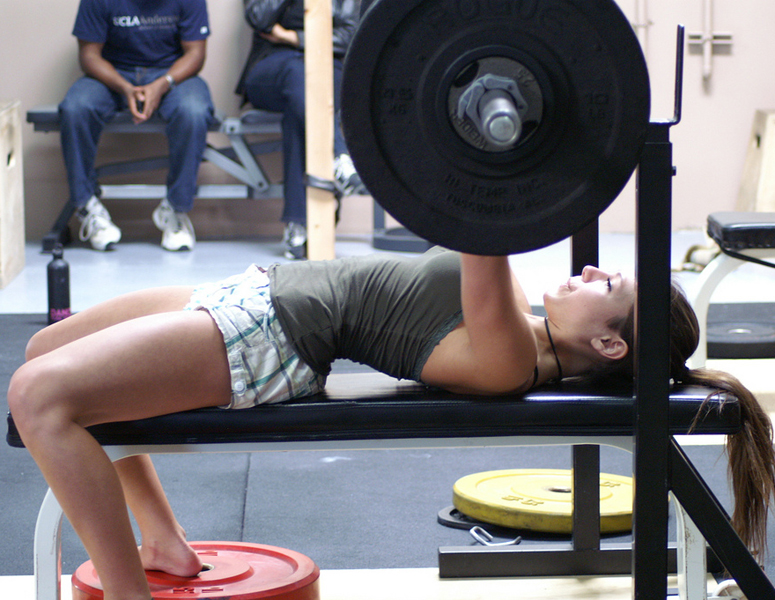Metabolism Through the Ages
.png)
As a child, I thought of metabolism as some mysterious, magical thing that you were either born with or without. Watching the kids that seemed to live on ice cream and pizza without gaining an ounce, the adults would say, "I wish I had that metabolism." Meanwhile, they followed perpetual diets, insisting that a single piece of chocolate would go straight to their thighs. They must not have any metabolism, I figured.
Of course, I now know better. Metabolism isn't a thing—it's a series of chemical processes that transform the food and beverages we consume into energy. So how is metabolism tied to weight loss? Everyone has a Basal Metabolic Rate (BMR), which is the number of calories the body uses to perform all of the “behind the scenes” functions that happen without having to think about them, like blood circulation, brain activity, breathing, body temperature, tissue repair and cell growth. The higher your BMR, the faster you’ll lose weight (when combined with reduced calorie intake and exercise).
Lori Zanini, a spokesperson for the Academy of Nutrition and Dietetics, points out that a number of factors influence metabolism, including gender, body size, family history, level of physical activity and—like it or not—age.
How Does Metabolism Change with Age?According to Torey Jones, registered dietitian and spokesperson for the Academy of Nutrition and Dietetics, the metabolic rate decreases by 1 to 2 percent each decade. That may seem like a small number, but the difference of a few daily calories can really add up over time.
Jones provides this example: If your basal metabolic rate is 1,800 calories per day at 20 years old, it may decrease to 1,760 at 30 years, 1,720 at 40, and so on. If your diet and exercise stay exactly the same over the years, these changes would result in a 3.75-pound weight gain every decade.
But that doesn't mean everyone experiences gradual weight gain. Lean body mass still trumps aging in terms of setting the body's metabolic rate. Mike Matthews, a health and fitness author, says you don't have to resign yourself to being "forever fat."
"The primary reason for slowing metabolism is muscle loss, so if you maintain your muscle, you maintain your metabolism. If you add muscle, you increase it," says Matthews. "Unless you’ve lost significant amounts of muscle from things like starvation dieting or excessive cardio, your metabolism is working more or less as well as it did when you were in your 20s. Even if you have made those mistakes, you can correct them with proper diet and training."
Metabolism in Your 20s
Enjoy it while it lasts! In your late teens and early 20s, the basal metabolic rate is at its highest point. Ellen Yin, fitness and nutrition expert with Ledbetter, explains why twentysomethings have such an advantage when it comes to burning calories: "People at this age are likely to be more active, they are at peak bone mass and muscle degradation hasn't yet begun."
Fitness competitor and trainer Samantha Bowman points out that those in their 20s have higher levels of growth hormone, which helps to maintain muscle size and density. This means that even without strength training, younger people retain more muscle tone.
But twentysomethings aren't completely in the clear. According to Kim Schaper, certified personal trainer and nutrition coach, they're more likely to suffer from sleep deprivation, courtesy of all those late-night parties, sugar-filled alcohol drinks and pre-exam all-nighters. Poor sleep has been linked to metabolic issues, increasing the risk of obesity and diabetes.
"Sleep at this age is incredibly important to keep belly fat and weight gain at bay," Schaper says. "If possible, aim to go to bed before 11 p.m. every night, and try to keep your sleep schedule the same even on the weekends. If you can get seven to nine hours of sleep a night, starting before midnight, your body will function much more effectively than if you go to bed well after midnight."
Metabolism in Your 30s
Bye bye, carefree college life—major lifestyle changes are typical of the 30s. As people settle down and start families, get office jobs and start juggling more responsibilities, exercise tends to decrease—and less exercise means less muscle and lean body mass, resulting in a lower metabolic rate.
Pregnancy may also wreak havoc on your metabolism—nearly half of all women gain more than the recommended weight while pregnant, which can cause an increase in insulin resistance, which can be a warning sign of Type 2 diabetes.
During this period, there is also a natural reduction of human growth hormone (HGH), which your body uses to regulate metabolism, bone growth and muscle growth in the body.
All of this means that the quality of food takes on greater importance. "People in this age group need to consume better nutrition and include exercise to maintain muscle tone and vitality," Bowman says. She suggests ramping up lean protein intake and reducing simple carbohydrates, which improves muscle regeneration and lessens the impact of simple sugars turning into fat.
Metabolism in Your 40s
Snap, crackle, pop! Most people in their 40s start to notice more age-related aches, pains and cracking joints, which can lead to a slowdown of activity. Again, Bowman stresses the importance of resistance training to build strength and prevent muscle loss.
"Age-related muscle loss can cause loose skin and fat accumulation in all individuals, regardless of body type," she says. "Training with weights will encourage the firming of muscles under the skin to alleviate both cellulite and sagging from poor muscle tone." To complement strength routines, Bowman recommends getting adequate protein and healthy dietary fats, like avocado and olive oil.
Yin points out that sarcopenia (loss of muscle mass) becomes a major factor after age 40, with inactive individuals potentially losing as much as 3 to 5 percent of muscle mass per decade. According to the National Strength and Conditioning Association, "inactivity plays a major role in sarcopenia, but does not account for all age-related muscle loss."
"In other words, muscle mass loss is inevitable with aging, but regular exercise (particularly, strength training) can help reduce the magnitude of loss," says Yin.
Metabolism in Your 50s
It's more important than ever to protect heart and lung health during your 50s, which means you shouldn't neglect cardiovascular training. Bowman suggests supplementing a healthy diet and strength training with endurance-based cardio, such as biking, swimming, dancing, running or walking.
As women enter menopause, there's a decrease of important hormones, such as HGH, estrogen and progesterone, says Yin. Combined with a continued loss of muscle mass, this causes the basal metabolic rate to further decrease, increasing the likelihood of weight gain.
The decline of sleep quality may also be a factor during the 50s. "Many people experience greater sleep disturbances as they get older, and metabolism is linked to sleep," says Jones. A study published in the Annals of Internal Medicine showed that lack of sleep can cause insulin resistance, a condition that elevates glucose levels in the blood and increases the risk of heart disease and stroke.
Metabolism in Your 60s
Heading into the 60s, the body's ability to effectively use stored energy begins to slow down, says Schaper. In turn, this creates a less effective metabolic rate and a decrease in muscle mass, which is important for a higher metabolism.
"At this age, exercise is of the utmost importance to keep the metabolism revving right along," Schaper says. "For individuals in their 60s, I recommend at least 2.5 hours of weekly exercise." She suggests swimming as an ideal activity for this age group, as it works all muscle groups with less joint impact and compression on the body, along with strength training to keep the joints strong, healthy and less susceptible to injury.
Metabolism in Your 70s
In the elderly, the basal metabolic rate continues to decrease, making healthy diet and regular exercise more important than ever. Choose exercises that help improve balance, which becomes more challenging in the 70s, making seniors more susceptible to dangerous falls.
Schaper recommends that people in this age group find a highly trained professional to help with balance and strength training. "Even the smallest movements can make a big difference in balance outside of the gym," she says. "You can do unilateral movements, which are exercises that focus on one limb. Some examples include standing on one foot, holding one arm out to the side or stabilizing with one dumbbell."
Where do you fall in the metabolic age range? Have you noticed any changes in weight gain or muscle mass over time? Check out these tips for boosting metabolism at any age.
- Prev:Lose Weight Like a Man
- Next:The Weight Loss Blues
-
Food—How Do I Use Thee? Let Me Count the Ways
Just about everyone who admits to loving “comfort food”
-
How To Lose One Pound Each Year
Ive gained one pound every year since I got back from Korea. I weighed
-
Weight Losing Tips To Lower Your Calories
Cutting down on your calorie intake is basically the essence of any we
-
Weight Loss Cardio - The Best Aerobics Routines To Lose Weight
One of the best ways to accelerate weigh
-
Can You Afford NOT to Change Your Relationship with Food?
I followed up with a prospective client recently. Shed contacted me
-
Quick Weight Loss Tips -- You Ready To Lose Big?
Many quick weight loss tips can be found from a variety of sources, y
- DON'T MISS
- Decrease Pounds Consuming Raw Nuts
- Weight Watchers Launches New PointsPlus System
- Quick Weight Loss with Appetite Suppressants
- Weight Loss Goals - Five Common Misstakes When It Comes To Weight Loss
- Greatest Weight Reduction Workout and Diet regime Plan For Busy People
- Meal-Timing Hacks That Curb Cravings
- Rapid Fat loss using Interval Training
- Workout Routines For Overweight People - Quick and Easy
- Low Carb Vs. Low Fat: Which Is Better For Weight Loss?
- Health plan, about health and weight loss supplements




